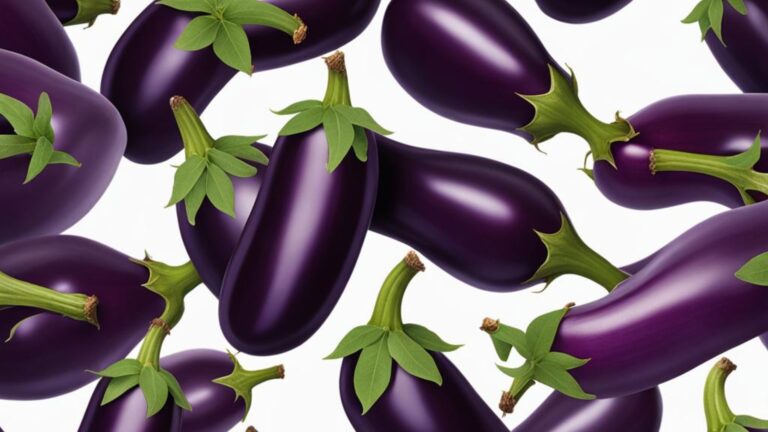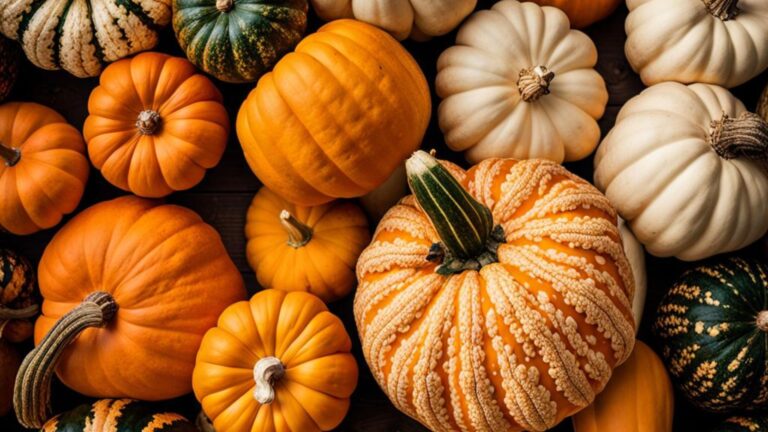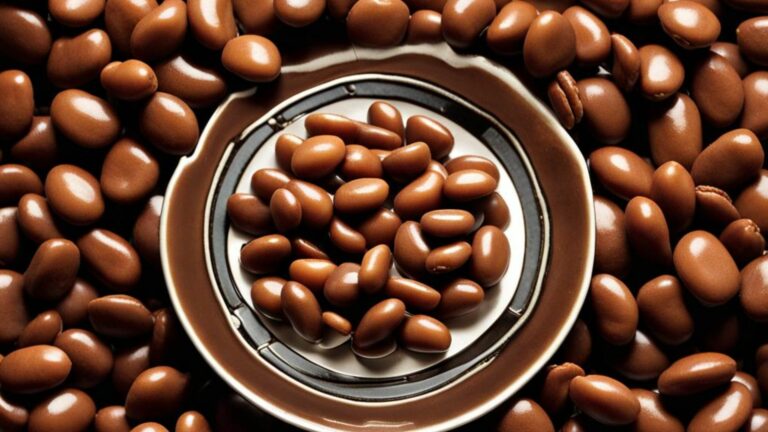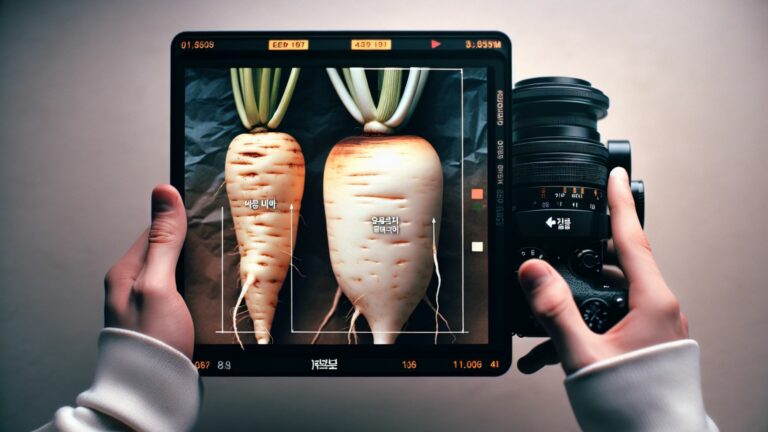
Rutabaga vs Turnip: What’s the difference? Rutabagas are larger and sweeter, while turnips are smaller and have a sharper flavor.
Both are root vegetables and can be used in various dishes for added earthy and hearty flavors.
Regarding root vegetables, two names often come up in the conversation – rutabaga and turnip.
These vegetables may appear similar at first glance, but they have quite a few differences.
This article will delve into the characteristics, taste, nutritional value, culinary uses, and health benefits of rutabagas and turnips.
By the end, you will thoroughly understand these two vegetables and easily distinguish between them.
An Overview
Here’s a comparison table highlighting the main differences and similarities between rutabagas and turnips:
| Characteristic | Rutabaga | Turnip |
| Botanical Name | Brassica napus | Brassica rapa |
| Appearance | Denser and firmer can be described as less watery. | Smaller and more spherical, with white or purple skin and white flesh. |
| Taste | Slightly sweet, nutty, and milder flavor compared to turnips. | Mildly peppery, slightly bitter, and more pungent flavor. |
| Texture | It tends to be more tender and somewhat watery. | It is a good source of vitamin C, potassium, and dietary fiber. |
| Nutritional Content | Generally higher in calories, carbohydrates, and vitamin C. | Denser and firmer can be described as less watery. |
| Nutrient Highlights | Longer cooking times are needed to soften their denser texture. | It tends to be more tender and somewhat watery. |
| Culinary Uses | Often mashed, roasted, boiled, or used in stews and soups. | Longer cooking times are required to soften their denser texture |
| Cooking Method | Longer cooking times are required to soften their denser texture. | It is a good source of dietary fiber, antioxidants, and minerals |
| Availability | It is rich in vitamin C, low in calories, and a good source of vitamin K. | Available year-round, with peak season in the fall. |
| Growing Conditions | Require a longer growing season and tolerate colder temperatures. | It is thought to have originated in Europe or Asia |
| Region of Origin | Available year-round but more common in the fall and winter. | It is thought to have originated in Europe or Asia. |
| Common Varieties | Swede (yellow-fleshed), American Purple Top, Laurentian. | Cooks are relatively quick due to their softer texture. |
| Health Benefits | Good source of dietary fiber, antioxidants, and minerals | Low in calories and fat, rich in vitamin C, and a source of dietary fiber |
| Culinary Uses | Can be used in a variety of savory and sweet dishes | Versatile and used in salads, soups, side dishes, and as a main ingredient |
| Notable Dishes | Rutabaga fries, rutabaga mash, rutabaga gratin | Turnip greens, turnip slaw, roasted turnips |
It’s important to note that rutabagas and turnips are nutritious vegetables with distinct flavors and textures, making them suitable for different culinary applications based on personal preferences.
Rutabaga vs Turnip: A Comprehensive Comparison

1. Characteristics
Rutabagas, scientifically called Brassica napus, is a cross between turnips and cabbage. They have a rough, earthy outer skin, usually purple, with yellow or creamy flesh inside.
Rutabagas are typically larger than turnips, with a more elongated shape and a rounded bottom.
On the other hand, turnips (Brassica rapa) have white or light tan skin with a purple or reddish blush on top. They have a crisp texture and a milder flavor compared to rutabagas.
Turnips come in various sizes, from small ones that can be eaten raw to larger ones used for cooking.
2. Taste
Rutabagas have a unique flavor, often described as a mix between cabbage and turnips. They have a slightly sweet and nutty taste with a hint of bitterness.
Rutabagas are less watery and denser than turnips, making them perfect for roasting, mashing, or adding to stews and soups.
Turnips, on the other hand, have a milder and more peppery flavor compared to rutabagas. Young turnips have a sweeter taste and a crisp texture, making them suitable for salads.
Larger turnips can be cooked, developing a softer, buttery texture with a slightly tangy flavor.
3. Nutritional Value
Both rutabagas and turnips are low in calories and fiber, making them great additions to a healthy diet.
Rutabagas are an excellent source of vitamin C, potassium, and manganese. They also contain significant amounts of vitamin A, vitamin E, and calcium. Rutabagas are rich in antioxidants that help fight inflammation and promote overall well-being.
Turnips are packed with vitamin C, providing more than 30% of the recommended daily intake in just one cup. They also contain folate, vitamin K, and calcium.
Turnips are a great energy source due to their high carbohydrate content and contribute to a healthy digestive system.
4. Culinary Uses
Rutabagas are versatile vegetables that can be prepared in various ways. They can be mashed, roasted, boiled, steamed, or added to stews and casseroles.
Rutabagas add a delicious flavor to dishes and are often used as a potato substitute in recipes for a healthier twist.
Turnips are widely used in both raw and cooked forms. They can be grated or sliced and added to salads for a refreshing crunch. Turnips can also be boiled, roasted, or mashed.
They are often incorporated into soups, stews, and side dishes, adding a distinct flavor to the overall dish.
Health Benefits
The consumption of rutabagas and turnips provides several health benefits due to their nutrient profiles:
Rutabaga Health Benefits
- Supports the immune system due to its high vitamin C content.
- Helps maintain healthy skin and promotes collagen production.
- Aids digestion and promotes bowel regularity due to its fiber content.
- May help lower blood pressure and reduce the risk of heart disease.
Turnip Health Benefits
- It boosts the immune system and fights infections with its vitamin C content.
- Its calcium and vitamin K content supports healthy bones and teeth.
- Reduces the risk of birth defects during pregnancy with its folate content.
- May aid in weight loss due to its low calorie and high fiber content.
Frequently Asked Questions
What is the Difference Between Rutabega and Turnip?
Rutabega and turnip are root vegetables but differ in taste, appearance, and texture. Rutabega is more extensive, sweeter, and yellowish-orange flesh, while turnip is smaller, has a sharper flavor, and its flesh is white.
Can Rutabega and Turnip Be Used Interchangeably in Recipes?
Yes, rutabega and turnip are often used interchangeably in recipes, especially when cooked. However, remember that rutabega tends to be sweeter and denser, while a turnip has a more intense flavor, so the taste and texture of the dish may vary slightly.
How Do I Select Fresh Rutabega and Turnip at the Grocery Store?
Choose rutabegas and turnips that feel heavy for their size, with firm and smooth skin. Avoid any with soft spots, blemishes, or signs of decay. The greens attached to turnips should be vibrant and crisp.
How Should I Store Rutabega and Turnip?
Store rutabegas and turnips separately in a cool, dark, and well-ventilated place. Remove the greens before storing them; they can draw moisture from the roots. They can be kept for several weeks if stored properly.
How Can I Prepare Rutabega and Turnip?
Rutabega and turnip can be boiled, baked, roasted, mashed, or added to stews, soups, and stir-fries. They can also be grated and used raw in salads or salads. Experiment with different cooking methods to find your favorite preparation.
Are Rutabega and Turnip Nutritious?
Yes, rutabega and turnip are both nutritious. They are low in calories and fiber and rich in vitamins and minerals, including vitamin C, potassium, and folate. They also contain antioxidants that may have health benefits.
Can Rutabega and Turnip Be Eaten Raw?
While rutabega and turnips are often cooked, they can be eaten raw. However, raw rutabega can be challenging and have a strong flavor, so it is frequently grated or sliced thinly. Turnip can be enjoyed raw in salads or as a crudité platter.
Can Rutabega and Turnip Be Frozen?
Yes, rutabega and turnip can be frozen. To freeze, peel, chop, and blanch them in boiling water for a few minutes, then plunge them into ice water to stop cooking. Drain and pack in airtight containers before freezing.
Can Rutabega and Turnip Be Grown in a Home Garden?
Yes, rutabega and turnip can be quickly grown in a home garden. They prefer cool weather and can be sown directly in the garden in early spring or late summer. Ensure they have well-drained soil and enough space to grow.
Are Rutabega and Turnip Used in Any Traditional Dishes?
Yes, rutabega and turnip are used in various traditional dishes worldwide. Rutabega is commonly used in Scandinavian cuisine, while turnip is a staple in dishes like Irish colcannon and Scottish neeps and tatties.
Conclusion
Rutabagas and turnips may share similarities but have distinct characteristics, tastes, and uses. Rutabagas have a more robust, nuttier flavor and are more extensive, while turnips have a milder taste and come in various sizes.
Both vegetables offer numerous health benefits and can be incorporated into various dishes to enhance their flavor and nutritional value.
So, the next time you come across these root vegetables in the grocery store or see them on a menu, you can confidently choose between rutabagas and turnips based on your preferences and the specific culinary application.




